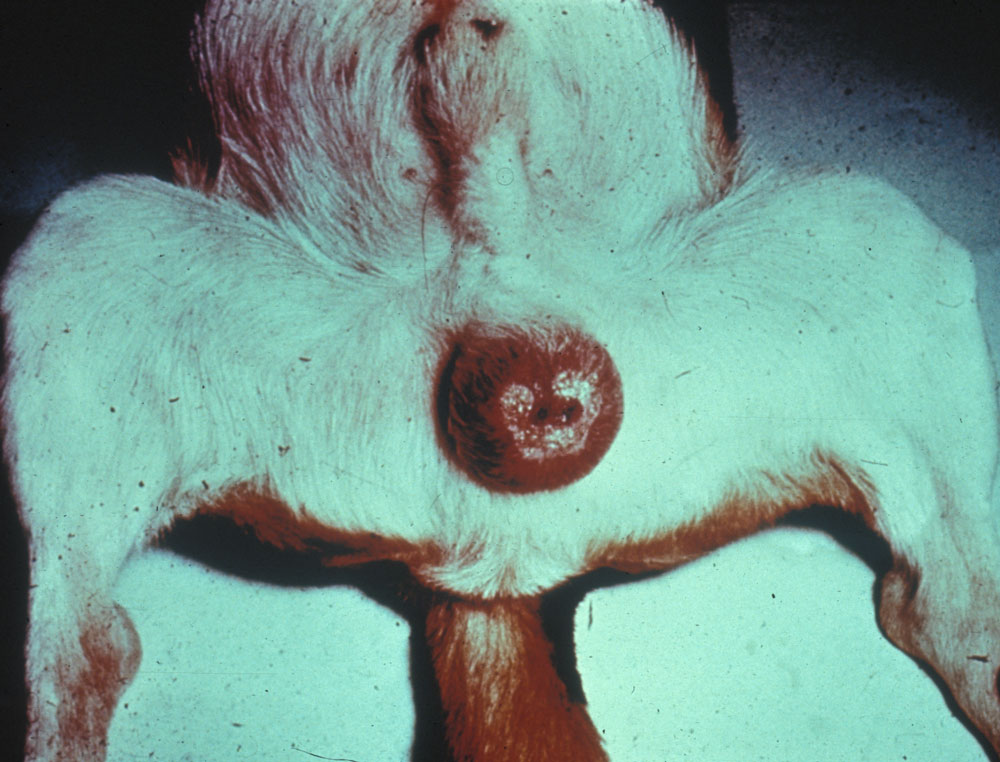Introduction
Brucella canis is a cause of
abortion in kenneled dogs. Dogs are the definitive host of this organism, and
natural infections in other animals are rare. Infection has caused a reduction
of 75% in the number of pups weaned in some breeding kennels. The disease
disseminates rapidly among closely confined dogs, especially at time of
breeding or when abortions occur. Transmission occurs via ingestion of
contaminated materials or venereal routes. Both sexes appear to be equally
susceptible. Transmission of brucellosis from dogs to humans occurs but appears
to be very rare.

Pathogenesis of canine brucellosis
Signs
 Primary signs are abortion during
the last trimester of pregnancy without premonitory signs, stillbirths, and
conception failures. Prolonged vaginal discharge usually follows abortion.
Abortions may occur during subsequent pregnancies. Infected dogs may develop
generalized lymphadenitis and frequently epididymitis, periorchitis, and
prostatitis. Spondylitis and uveitis are occasional complications. Fever is not
characteristic.
Primary signs are abortion during
the last trimester of pregnancy without premonitory signs, stillbirths, and
conception failures. Prolonged vaginal discharge usually follows abortion.
Abortions may occur during subsequent pregnancies. Infected dogs may develop
generalized lymphadenitis and frequently epididymitis, periorchitis, and
prostatitis. Spondylitis and uveitis are occasional complications. Fever is not
characteristic.
Diagnosis
Diagnosis is based on isolation
and identification of the causative agent or by serology. The organisms can
usually be readily isolated from vaginal exudate, aborted pups, blood, milk, or
semen of infected dogs. The most widely used serologic test is an agglutination
test by a tube or slide method. Nonspecific agglutination reactions occur in
some dogs from which Brucella has not been isolated. To eliminate nonspecific
antibodies, the serum is treated with 2-mercaptoethanol and retested. An agar
gel immunodiffusion test performed in some laboratories is quite specific.
Control
 Attempts at immunization have not
been successful. Control is based on elimination or isolation of infected dogs
identified by positive cultural or serologic tests. Incidence of infection is
much lower in kennels where dogs are caged individually.
Attempts at immunization have not
been successful. Control is based on elimination or isolation of infected dogs
identified by positive cultural or serologic tests. Incidence of infection is
much lower in kennels where dogs are caged individually.
Treatment
Longterm therapy, eg, with a
combination of streptomycin or gentamicin and tetracycline, has been successful
in many cases.

No comments:
Post a Comment